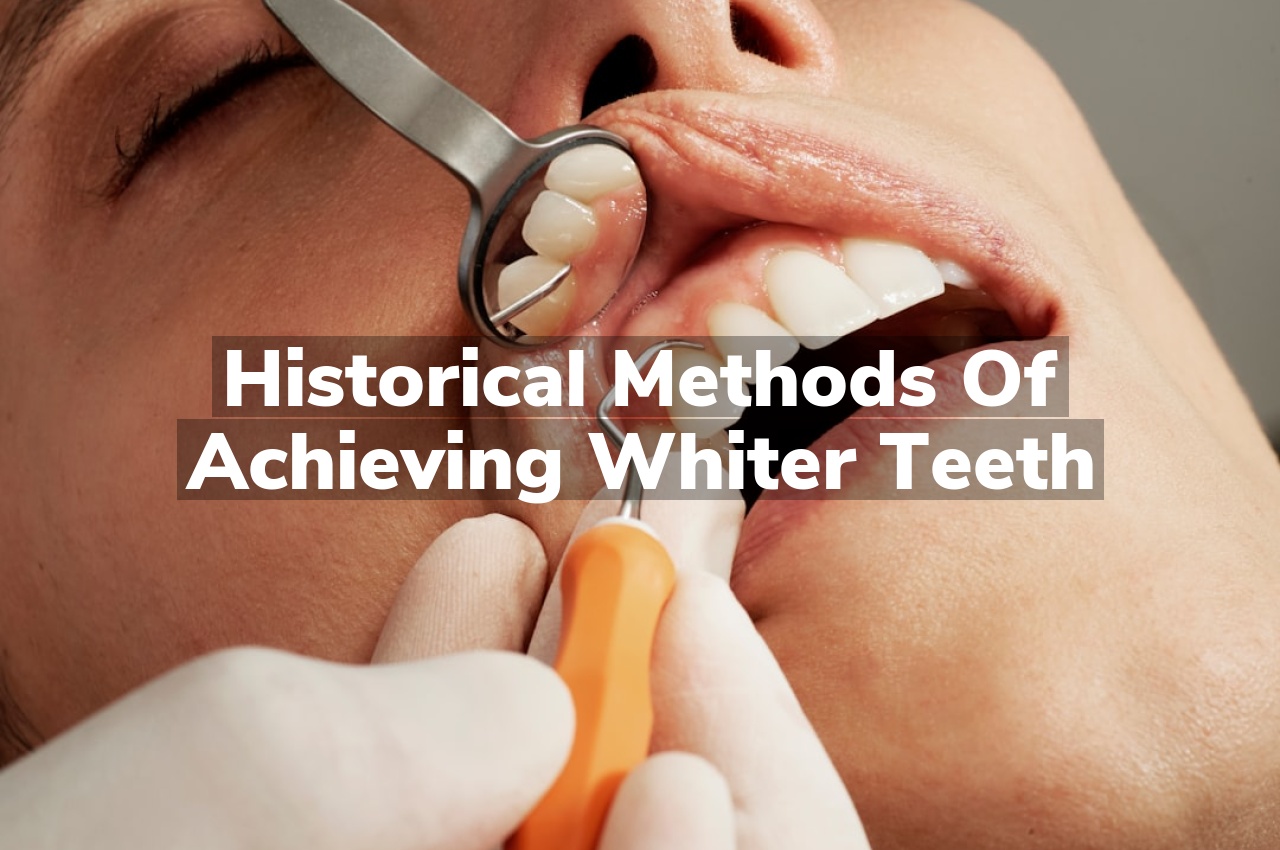Have you ever wondered how people in history achieved brighter smiles without modern dental technology? Throughout the ages, various natural substances and techniques were employed to remove stains and whiten teeth, reflecting a universal desire for a luminous smile. These methods, while innovative for their time, differ greatly from today’s advanced dental practices.
Ancient Toothpaste and Powders
Throughout history, the quest for whiter teeth has been a constant pursuit, reflecting not only aesthetic preferences but also social and cultural significance. In ancient civilizations, people developed various methods to achieve a brighter smile, understanding its impact on their appearance and interpersonal interactions. One of the earliest solutions was the creation of toothpaste and powders, concocted from a variety of natural substances. These ranged from crushed bone and eggshells to herbal mixtures, each selected for their abrasive qualities to remove stains and polish the teeth. This historical context underscores the timeless value placed on oral hygiene and the universal desire for a radiant smile, a topic further explored in The Psychology of a Brighter Smile.
The ingredients used in these ancient formulations were surprisingly effective given the limited resources available. Charcoal, for instance, was prized for its ability to absorb impurities and whiten teeth, a practice that finds echoes in modern dental care products. Similarly, various civilizations utilized baking soda, a mild abrasive, to clean teeth and freshen breath. These ancient toothpaste and powders were not only instrumental in maintaining oral health but also played a significant role in the social lives of individuals, enhancing their confidence and societal standing. The evolution of these early dental care practices highlights humanity’s enduring ingenuity in the pursuit of beauty and well-being.
Early Dental Practices for Whiteness
Throughout history, the quest for whiter teeth has been a common goal across various cultures, reflecting ideals of beauty and social status. In ancient times, people employed a variety of methods to achieve a brighter smile, often with ingredients that might seem unconventional today. For instance, the ancient Egyptians created a whitening paste using ground pumice stone mixed with vinegar, believing this abrasive mixture would remove stains and restore the teeth’s natural gleam. Similarly, the Romans used urine for its ammonia content as a bleaching agent, a practice that, while effective, starkly contrasts with modern sensibilities and health standards.
In the Middle Ages, the desire for whiter teeth led to the use of more abrasive substances, such as sage and charcoal, which were rubbed onto the teeth to remove discoloration. These early dental practices highlight the lengths to which people have gone to achieve what they considered the pinnacle of dental aesthetics. While these methods laid the groundwork for understanding dental care, they also underscore the evolution of safer, more effective techniques developed over centuries. For those looking to enhance their smile with contemporary methods, Get a Whiter Smile in Columbia offers a glimpse into modern solutions that honor the pursuit of dental beauty with advanced care.
Historical Use of Acidic Substances
Throughout history, the quest for whiter teeth has led to the use of various methods, including the application of acidic substances. This practice dates back to ancient civilizations, where people discovered that certain acidic compounds could help in removing stains and discolorations from the surface of the teeth. These substances, often derived from natural sources such as fruits and vinegars, were applied with the aim of achieving a brighter smile. While this method was popular among those seeking cosmetic improvements to their dental appearance, it is important to understand the historical context and evolution of dental care practices over time.
Chewing Sticks and Herbal Methods
Throughout history, various cultures have sought methods to achieve whiter teeth, reflecting beauty and health. Among these ancient practices, chewing sticks, derived from specific trees known for their antibacterial properties, played a pivotal role. These sticks were not only used to clean teeth but also to freshen breath. Similarly, herbal methods were widely employed, utilizing a range of natural ingredients believed to brighten and strengthen teeth. These historical approaches highlight the ingenuity of past societies in oral hygiene, using the resources available to them. For those interested in modern dental care techniques and services, Dental Care of Rosewood is a notable mention, further explored through this Columbia Dentist.
Cultural Significance of White Teeth
Throughout history, the pursuit of whiter teeth has been more than just a quest for an attractive smile; it has held deep cultural significance across various societies. Traditionally, white teeth have been associated with beauty, wealth, and social status, symbolizing health and hygiene as well as indicating a person’s ability to maintain a certain level of self-care and personal grooming. In many cultures, bright smiles have been admired and sought after, influencing social interactions, marriage prospects, and even career opportunities. This universal appeal of whiter teeth has led to the development of numerous methods and practices aimed at achieving a dazzling smile, reflecting the timeless desire to meet the beauty standards of one’s time and society.
Conclusion
For more insights, read reviews on Google Maps or call us at 803-810-1416.

